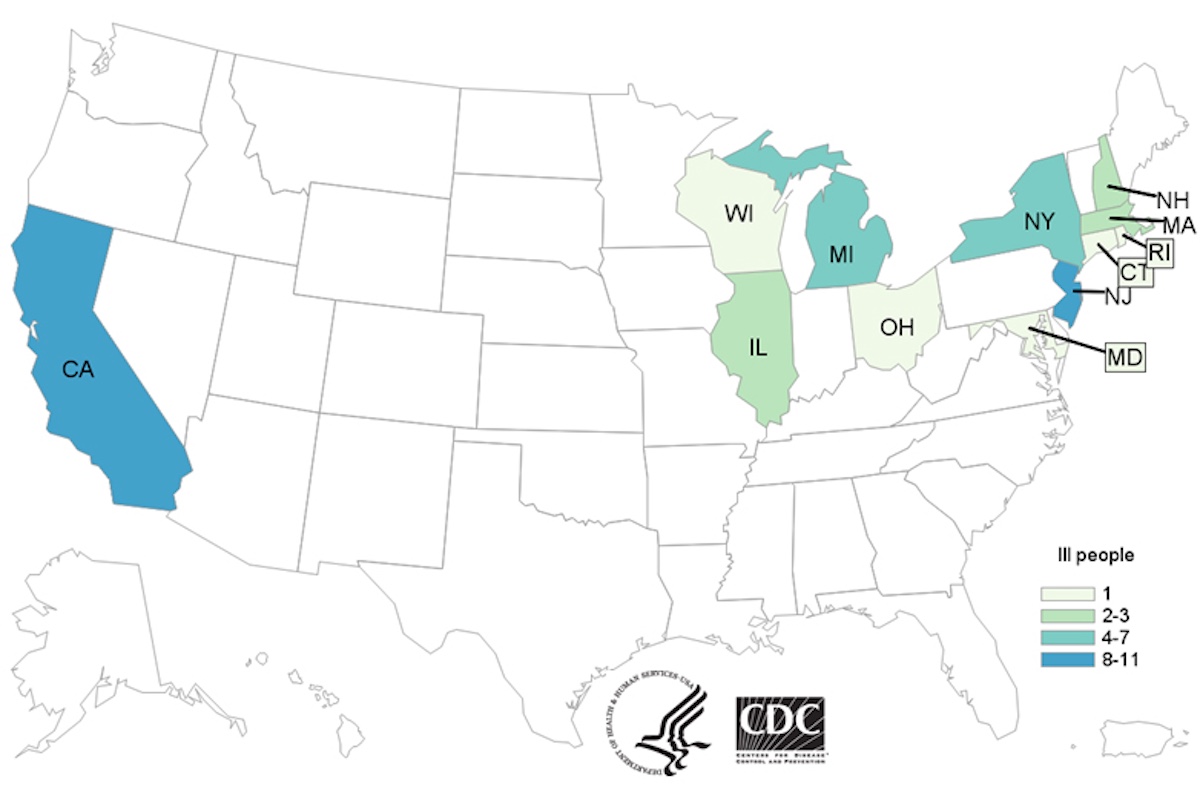The FDA has updated the E. coli O157:H7 romaine lettuce outbreak. Now 43 people in 12 states are sick. That’s an increase of 11 patients since the last update on November 20, 2018. Sixteen people have been hospitalized, and one person has developed hemolytic uremic syndrome (HUS), a type of kidney failure.

The case count by state is: California (11), Connecticut (1), Illinois (2), Massachusetts (2), Maryland (1), Michigan (7), New Hampshire (2), New Jersey (9), New York (5), Ohio (1), Rhode Island (1), and Wisconsin (1). The patient age range is from 1 to 74 years. Of the 38 people who were interviewed by officials, 16, or 42%, have been hospitalized. The illness onset date range is from October 8 to October 31, 2018.
There is new evidence about where the romaine that sickened these people may have come from. Traceback has shown that the lettuce came from the Central Coastal growing regions of northern and central California. No common grower, supplier, distributor, or brand of romaine lettuce has been identified.
Government officials are telling consumers to avoid any romaine lettuce harvested in that area of California. The problem is that lettuce, like other produce, is rarely labeled with the place it was grown. The FDA and growers are planning to change that. Romaine lettuce will be labeled with a harvest location and a harvest date, or be labeled that is is hydroponically- or greenhouse grown.”

If you have been sickened in this E. coli O157:H7 romaine outbreak, you can contact lawyer Fred Pritzker by calling 1-888-377-8900.
Food safety attorney Fred Pritzker, who has represented clients sickened in E. coli O157:H7 outbreaks, said, “It’s good that the FDA and CDC have identified the growing area where this lettuce was produced, and that they are going to start labeling lettuce. But giving consumers a brand name would be more helpful.”
Officials state that, “romaine lettuce harvested from areas that include, but are not limited to the desert growing region near Yuma, the California desert growing region near Imperial County and Riverside County, the state of Florida, and Mexico, does not appear to be related to the current outbreak. Additionally, there is no evidence hydroponically- and greenhouse-grown romaine is related to the current outbreak.”
There are at least 22 people who are sick with the same strain of pathogen in Canada in this E. coli O157:H7 romaine lettuce outbreak. The Public Health Agency of Canada and the Canadian Food Inspection Agency are collaborating with U.S. agencies to try to solve this outbreak.
Unless you can identify where the lettuce was grown, don’t buy it. That includes bags of salad mix, whole heads of romaine, hearts of romaine, and baby romaine lettuce.




